Many call it the best milk you will ever taste. When combined with coffee, it adds creaminess and sweetness to the drink. It’s often called competition milk as a reference to its regular appearance at the World Barista Competition stages around the world. Typically, it’s made using the technique called freeze distillation (or fractional freezing); thus, another commonly used name is freeze-distilled milk. It’s a new ingredient that baristas can get creative with when designing coffee drinks for the speciality cafe menu.
In this article, we will discuss the undeniable importance of dairy milk for the specialty coffee industry, why we don’t see the competition milk behind the bar of specialty cafes yet, and how innovative products like MILBOK can bring unique characteristics of freeze-distilled milk to baristas around the world.
The importance of cow’s milk in speciality cafes (and its lack of innovation)
In recent years, specialty coffee has witnessed a surge in alternative milk options, catering to the diverse preferences of consumers. However, despite the growing popularity of plant-based milk alternatives, dairy milk continues to play a significant role in milk coffee orders. Two examples below demonstrate what we hear from cafes and baristas across Europe.
- 68% of coffee orders are for milk coffee, as outlined in our Espresso Drinks Explained video filmed at Večerka café in Brno.
- 65-75% of Rebealbean customers still choose cow milk, as Marek Janča (head of cafe operations) pointed out.

While the alternative milk trend is booming, it is essential to address the lack of innovation in dairy milk. Speciality cafes have limited options due to supply chain challenges or fresh milk instability. There is a limited number of milk producers that care about the coffee industry, which contributes to the lack of innovation in the ingredient that is crucial for the success of any coffee business. Cafe managers and baristas often need to settle with the least preferable but the most convenient option on the market.
What makes a perfect milk foam for latte art?
Not every consumer can tell the difference in coffee taste, but milk foam in coffee is much easier to distinguish between good and bad. So what’s the secret of the perfect milk foam?
Many still believe that a higher fat content creates a better foam, often forgetting the milk proteins that play a crucial role in this process. Let’s take a closer look at it.

Milk foam is created when hot steam under pressure blows air into the milk. During this process, a lot of tiny bubbles are injected into the milk and activate the milk proteins – whey and casein. Because of the rising temperature, the proteins change their structure and start to create the protective layer around air bubbles, preventing them from bursting and creating the perfect milk foam. Simply put: with protein, the milk foams; without protein, the milk is like water and has no chance of foaming.
So what about fat? What is its purpose? Although if it does not play a critical role in the formation of milk foam, poor quality fat can have a significant effect on the stability of milk foam. If the milk is subject to bacterial or enzymatic action due to cow conditions or poor storage, this can lead to a process called ‘lipolysis’. This process leads to the formation of free fatty acids – monoglycerides and diglycerides. If many of these compounds are present in the milk, they will replace the protein and good fat in the outer layer of the air bubble, significantly reducing the stability of the froth and causing it to break down. However, fat is the carrier of flavour, so if you want a delicious milky coffee with a rich and rounded taste, it’s always better to reach for whole milk.
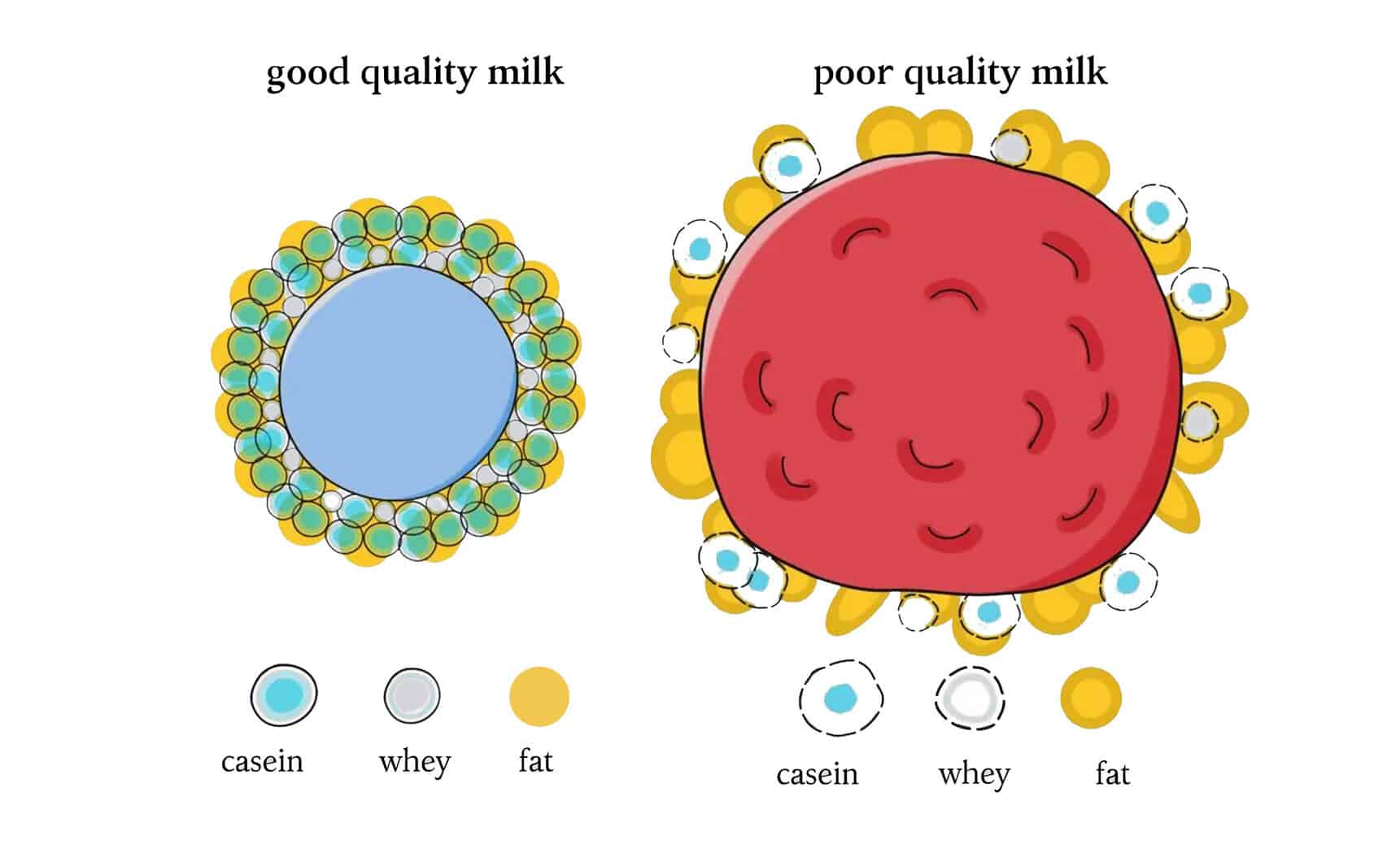
The formation of foam is basically a “team work” of proteins and fats, with proteins taking the lead. Even the slight difference in protein content can affect the final quality of milk foam, while the fat affects taste and overall mouthfeel. Therefore, when choosing a milk, it is good to take into account not only the fat content, but especially the protein content.
To get the best of milk in café operations, baristas should focus more on preserving milk during daily use and storage. For a better foam quality, always cool down your milk before steaming. General recommendation is refrigeration also to maintain freshness, the temperature is generally set at 2-8 °C; close the refrigerator door properly or avoid frequent opening and closing. Milk should also be sealed adequately after pouring to avoid excessive contact with air or other materials.
Challenges of choosing the suitable milk
Cafe managers and baristas face the difficult task of choosing the milk supplier for their cafe operation. Milk producers rarely optimise their products to be used in the cafe environment. Barista milk editions are often just re-packaged versions of regular milk with tiny improvements but higher prices.
Based on our discussion with baristas, these are the typical issue:
- High-fat content – it’s typical for some organic milk that leads to overpowering coffee in the beverage,
- Milk quality inconsistency – changing characteristics of milk, which depends on external factors such as the season/nutrition of the cows, that lead to inconsistent coffee drinks served to customers,
- Supply chain issue – even if the cafe finds a great milk producer, it’s nearly impossible to guarantee a regular and reliable delivery of the product,
- Storage – a limited space to store fresh milk refrigerated.
Unfortunately, there is no perfect solution for all. It’s about the right trade-offs for each and every cafe business. Some choose a local fresh farmers’ milk and deal with possible inconsistencies; some go for UHT and the convenience, some choose based on the price and accessibility and some change all the time.
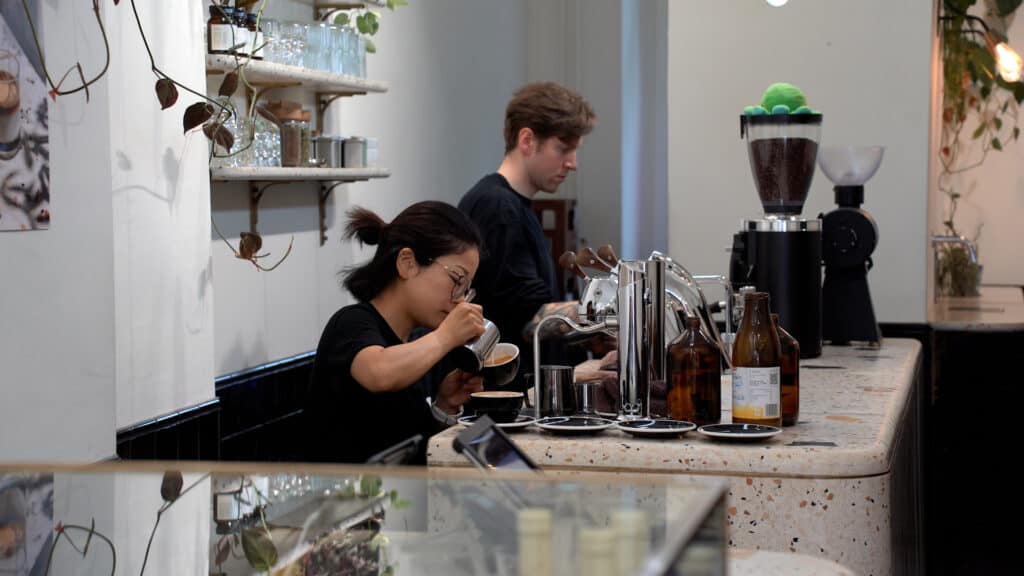
For most, dairy milk (even though being such an important ingredient on the menu), seems like quite a headache part of the operations. While trying to bring to their customers the best quality coffee beans, machines, water, service, and alternative options, many speciality cafes compromise on dairy milk.
What makes Competition Milk popular among world-class baristas?
Sometimes coffee shops have to make compromises in the operation; what if you didn’t have to? What kind of milk do world-class baristas choose in their barista competition routines?
Competition milk, often used in professional barista competitions, undergoes a freeze-distillation process. This process involves reducing the water content in milk, resulting in enhanced creaminess, sweetness, texture, and improved foaming properties. These characteristics elevate the overall sensory experience of milk-based espresso drinks. This concept was introduced by Canadian barista Ben Put at the World Barista Championship in 2017, and no surprise this concentrated milk has gained popularity ever since!
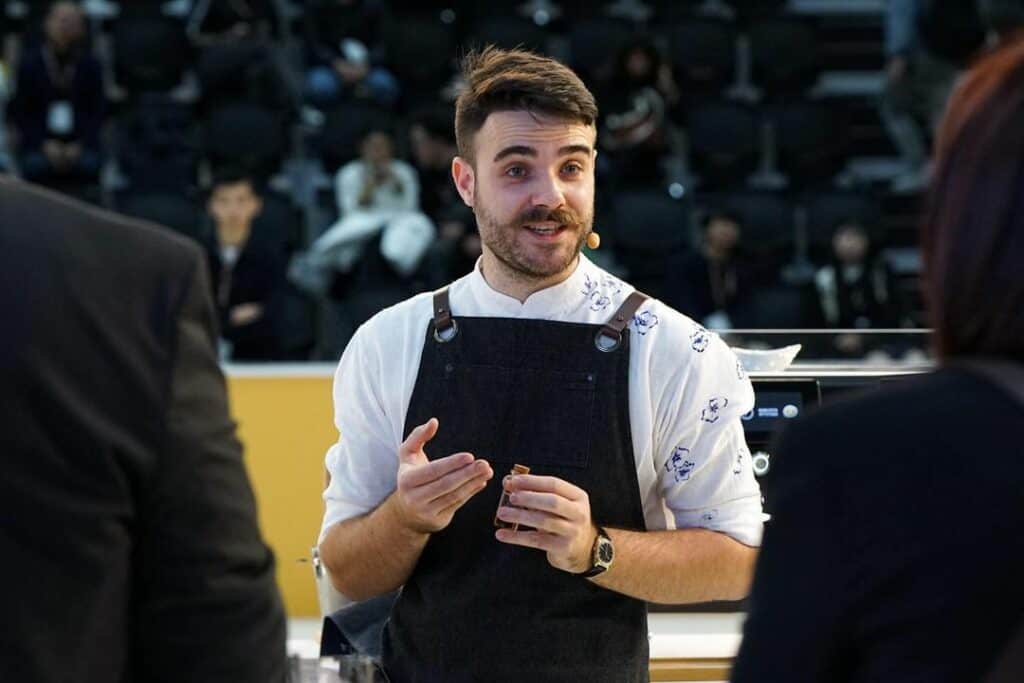

“[Competition] judges are looking for the sweetness and rich, creamy mouthfeel as well as for the balance in the cup. Freeze-distilled milk can bring both of those qualities, and the result is a delicious milk course that can score a lot of points,” explains Denis Kramář, Czech Barista Champion 2022 & 2023; why many barista competitors opted for this version of milk. “It helps me balance perfect sweetness and tactile in my milk beverage,” adds Kateřina Myšková, Czech Barista Vice-Champion 2023.
How to make Competition Milk “at home”? (it’s not that easy!)
What’s the typical way to produce it? “Grab a jug of whole milk, knowing that half of the water content in it will lower the overall volume. Freeze it, and then when it’s perfectly frozen, flip it upside down on top of a second container, and let it melt. This process must happen in a cold environment to be food safe too.” That’s the basic process described by Tanya Nanetti for Barista Magazine.
It sounds easy; everybody can make it without dedicated equipment. The taste is superior to regular milk. Why don’t we see it served at specialty coffee shops around the world?
Real-life challenges of Competition Milk production
While competition milk excels in terms of flavour and texture, the production process poses challenges for café operations. “I can’t imagine making it on a bigger scale for the cafe,” expresses his concerns Denis Kramář, who is also Head of Coffee at Rebelbean, with 4 cafe locations. He adds several challenges he faced in making freeze-distilled milk for his competition routine. These are key areas that prevent cafes from adding it to the menu:
- time-intensive process (you need to expect over 10 hours)
- taste inconsistency between batches (control of defrosted milk)
- food safety & hygiene issues (to prevent milk contamination)
- higher mineral content (perceived saltiness)
Despite the challenges, some cafés have managed to incorporate competition milk successfully. A great example of such a business is Substance Cafe in Paris which we visited in 2018. Its co-founder & head barista Joachim Morceau proudly serves exceptional, often unique competition level, coffee lots to specialty coffee connoisseurs from around the world.
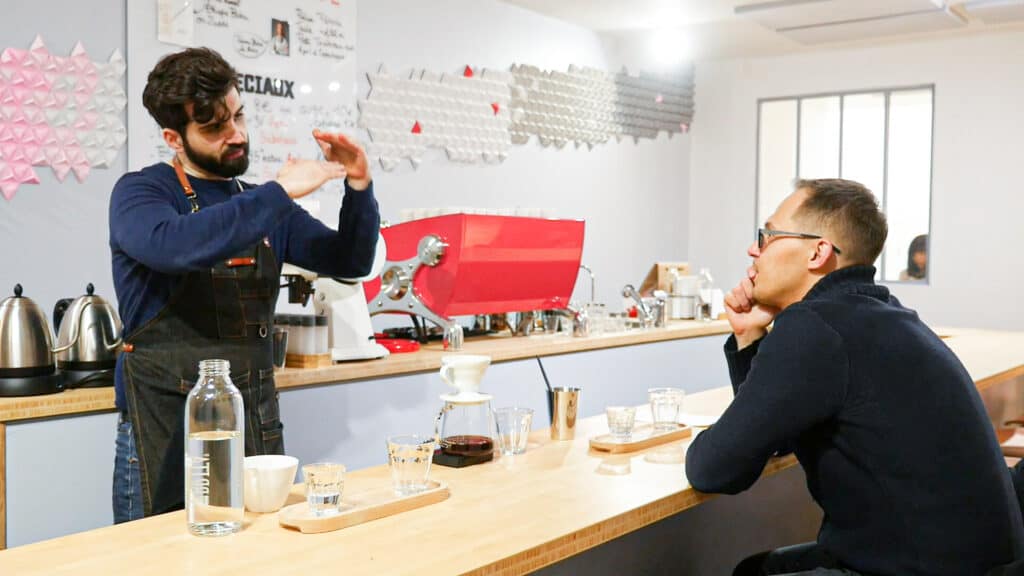
A limited coffee menu and seat number allow Joachim to experiment even with more demanding ingredients and preparation methods. Unfortunately, it’s not convenient enough for the majority of specialty coffee shops in Europe.
Competition Milk as a ready-to-use product for cafes: Introducing MILBOK
Barista competitors are pushed to innovate and experiment in order to gain an extra edge against the competitors. Freeze-distilled milk has become a new standard and almost a requirement for any barista competitor with real ambition to succeed. Yet, what’s the point when you can’t apply these innovations to real-time situations in the coffee shops and offer them to the customer?
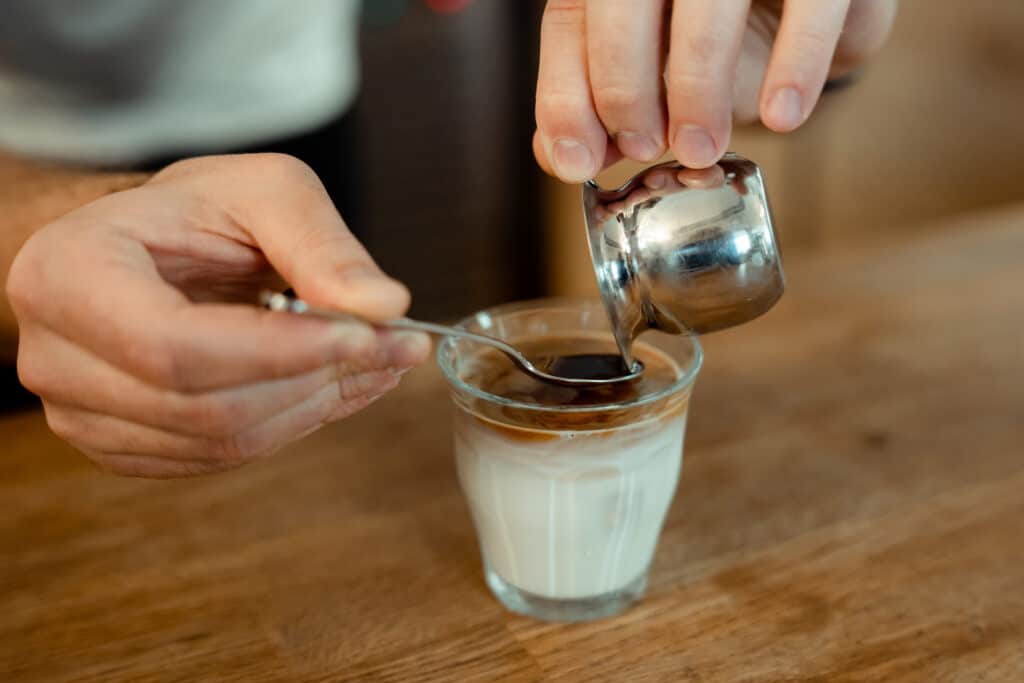
Since Summer 2022, we had been in contact with the team at BeFood that was aiming to apply their milk production skills and expertise to create a ready-to-use competition milk for specialty coffee market in Europe. They call it MILBOK. We had a chance to taste the pre-production batches and see the reactions from the barista community. We are excited that the official production in the Czech Republic is set to start in July 2023. What should you know about it?
Barista competition ingredients for everyday specialty cafes operation
MILBOK is a partially condensed milk using an innovative technology that removes a part of milk’s water content while controlling the ratio of fat & protein (not possible with homemade competition milk preparation).
They control the fat level to 5% not to overpower coffee as some high-fat milk may do, and the protein level is set at 5,5%, which is considerably higher than typical cow’s milk resulting in better foaming, texture and foam stability. All nutritional levels are standardised, which makes it very predictable and helps baristas to keep their milk drinks consistent. There are no sweeteners, no additives, just pure milk. Interestingly, MILBOK’s production exceeds, in many aspects, the EU hygiene requirements for milk production.
Pioneering MILBOK in Czech and Polish specialty cafes
“We wanted to show our customers this new product. We launched it with the summer menu in a drink called Dirty Coffee. It is a cold MILBOK with hot espresso on top served in a glass. It is really tasty, and it looks great too,” explains Denis Kramář how they decided to use MILBOK on their menu. “Given the MILBOK’s thickness, poured espresso remains on the top, visually creating two separate layers that slowly start dissolving into each other as we drink it,” continues the current Czech Barista Champion.


What led a respected Prague specialty cafe Můj Šálek Kávy to start using MILBOK?
“So the public can also enjoy this competition experience. We did the whole combo. Single espresso and milk beverage in the same ratio as in competition” highlights Kateřina Myšková of Doubleshot how they turned a limited barista competition experience into a new item on their menu.
“It’s simply double milk! MILBOK additionally emphasises the advantages of the drink with which it is combined. Matcha is even fresher, fruity coffees even fruitier, and South American classics even sweeter,” the team at Warsaw’s Dobra Materia summarises their experience with ready-to-use competition milk.
Disclaimer: MILBOK by BeFood is an advertising partner of European Coffee Trip.
Visiting the World of Coffee in Athens? Come and taste MILBOK and Dirty Coffee at the Rebelbean stand (Roaster Village, table 8 in Hall 2) from 22nd to 24th June 2023.


